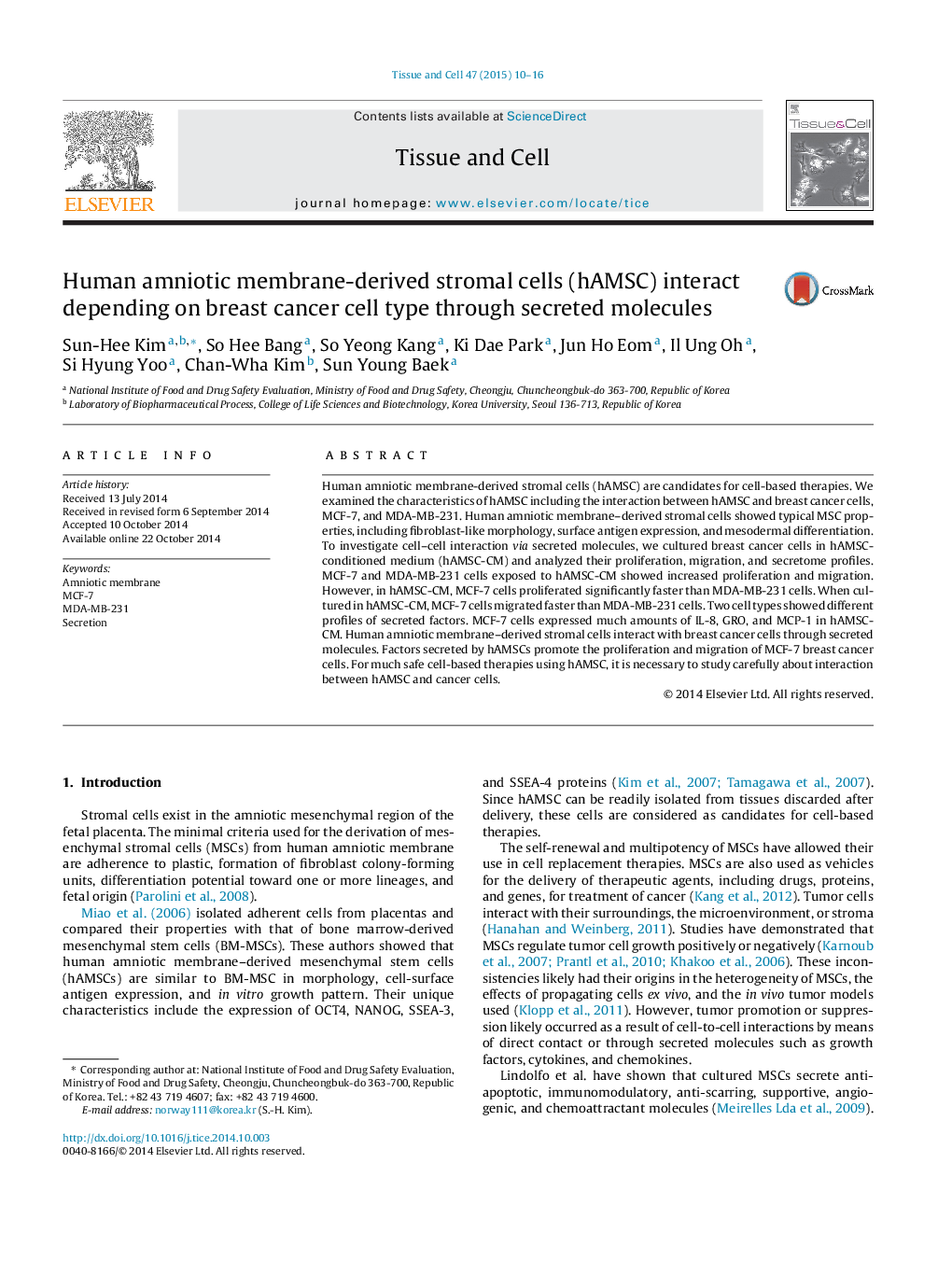| Article ID | Journal | Published Year | Pages | File Type |
|---|---|---|---|---|
| 2203667 | Tissue and Cell | 2015 | 7 Pages |
•Human amniotic membrane-derived stromal cells secreted various cytokines.•Breast cancer cells exposed to hAMSC-CM showed increased proliferation and migration.•Responses of breast cancer cells on hAMSC-CM were different depending on cell type.
Human amniotic membrane-derived stromal cells (hAMSC) are candidates for cell-based therapies. We examined the characteristics of hAMSC including the interaction between hAMSC and breast cancer cells, MCF-7, and MDA-MB-231. Human amniotic membrane–derived stromal cells showed typical MSC properties, including fibroblast-like morphology, surface antigen expression, and mesodermal differentiation. To investigate cell–cell interaction via secreted molecules, we cultured breast cancer cells in hAMSC-conditioned medium (hAMSC-CM) and analyzed their proliferation, migration, and secretome profiles. MCF-7 and MDA-MB-231 cells exposed to hAMSC-CM showed increased proliferation and migration. However, in hAMSC-CM, MCF-7 cells proliferated significantly faster than MDA-MB-231 cells. When cultured in hAMSC-CM, MCF-7 cells migrated faster than MDA-MB-231 cells. Two cell types showed different profiles of secreted factors. MCF-7 cells expressed much amounts of IL-8, GRO, and MCP-1 in hAMSC-CM. Human amniotic membrane–derived stromal cells interact with breast cancer cells through secreted molecules. Factors secreted by hAMSCs promote the proliferation and migration of MCF-7 breast cancer cells. For much safe cell-based therapies using hAMSC, it is necessary to study carefully about interaction between hAMSC and cancer cells.
